

Ah, the age-old question: How many hours should you work? In the United States, most corporate firms would peg the benchmark for an average workweek at 40 hours or more.
Finding the answer to this question is trickier than you may think. Not only does the type of work you do affect the outcome, but so does how you feel about work-life balance. Cultural influences, capacity, and expectations all play a part here. And the final answer is: It depends.
Here, we’ll take a closer look at how many working hours you should perform per week. We’ll explore the risks of both underworking and overworking. Plus, we’ll offer strategies so you can make the most out of the time you spend working—without getting burnt out. 🤩
- How Many Hours Should You Work?
- The Risks of Underworking and Overworking
- What Are Alternative Work Schedules?
- Strategies to Make the Most of the Hours You Work
- Use a time tracker to stay on top of deadlines
- Create a task schedule with calendar views to visualize workflows
- Break work down into manageable tasks
- Assign priorities and dependencies to project tasks
- Say no to new work if you’re at capacity
- Limit multitasking to avoid distractions
- Block time for deep work
How Many Hours Should You Work?
How many hours should you work each day or each week? The answer here depends on where you are in your professional life and finding a balance that works for you. Entrepreneurs who are launching a new business should expect to work longer hours than a mid-level professional who has already managed to streamline processes and maximize time on regular tasks.
What’s the consensus on how many hours you should work? Well, there doesn’t seem to be one. But there’s a smattering of opinions across the board. 👀
Gary Vaynerchuk, a famous marketing guru, made waves when he said startup founders should work 18 hours a day or more during their first year. The idea here is that every waking minute should be dedicated to the success of your business in the early days.
Elon Musk is a known workaholic and has made the case for 80-hour to 120-hour workweeks. He says the hustle is manageable but involves sleeping in the office, foregoing meals, and often skipping showers—even if it makes you a little crazy.
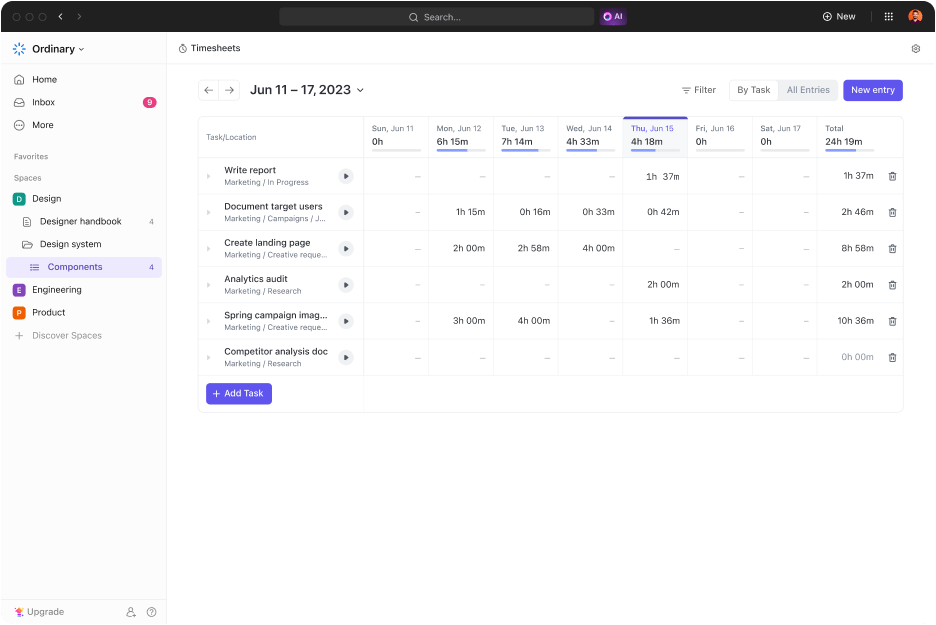
In a study by EuroNews, full-time employees in Europe typically worked anywhere from 32 to 42 hours per week. Europeans are famous for having a better work-life balance than Americans driven by a “be the first to arrive and last to leave” office mentality.
Wired shared the story of a Liverpool marketing agency that trialed a six-hour workday. They found that employees were more efficient but also became more stressed about cramming deep work into shorter time slots. So, they settled on three long workdays and two shorter working days for better balance.
As you can see, finding the answer to “How many hours should you work?” depends on culture, what you’re working on, and what makes you happy. Whether you work 40 hours a week, a little more, or a little less, your goal should be to design an ideal workweek that maximizes productivity without feeling burnt out or bored at your desk.
The Risks of Underworking and Overworking
Whether you have a full-time job or engage in part-time work, doing too much or too little is harmful. Work yourself to the bone, and you’ll feel burnt out and disconnected from the task. If you slack off, you’ll fall behind and feel stressed when performance review time comes around. 📚
Here are some of the risks of overworking:
- Sleep deprivation: Studies show that excessive workloads and lack of sleep can actually decrease productivity
- High levels of stress: Working long hours can lead to stress, which reduces your ability to produce good work
- Dissatisfaction: Workers who spend long hours in the office often experience dissatisfaction with their jobs, increasing unhappiness and often harming employee relationships
- Mental and physical health issues: The connection between burnout and mental health is notable, with many workers who spend long hours at the office feeling unmotivated, depressed, and anxious
- Physical health problems: It’s not just your mental health that suffers. Excessive work schedules have been linked to increased risk of heart disease and other ailments. You may feel low energy and an inability to work out or do other physically demanding activities
- Damaged relationships: Working too much can affect your ability to build meaningful relationships in your personal life. You miss out on time with your family, friends, and loved ones, leading to feelings of being disconnected
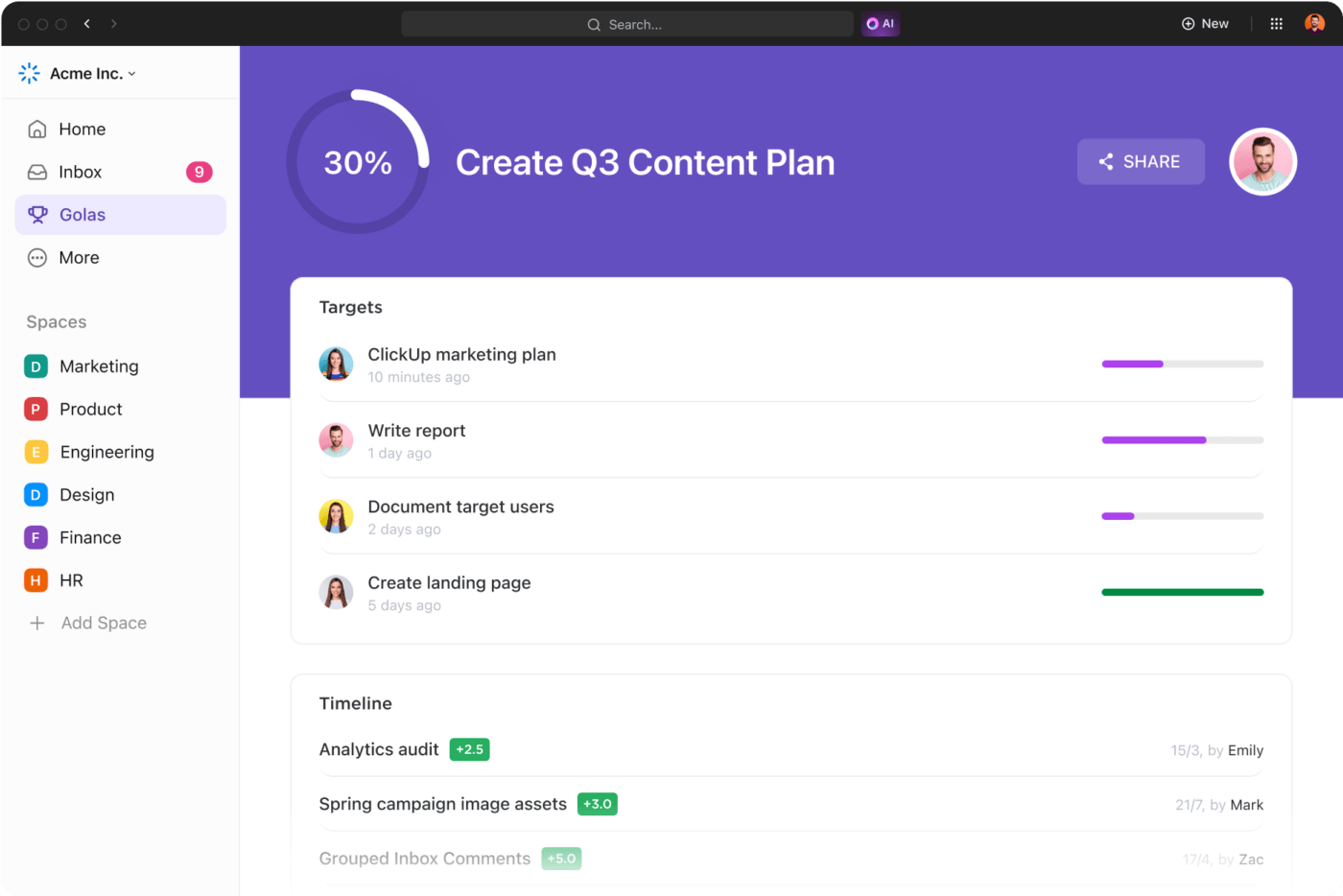
Underworking is just as bad. It can take an emotional toll by making you feel guilty, unworthy of accolades, and worried about your job security. In some cases, underperformance can lead to depression and anxiety, making it hard to dig yourself out of a rut.
Here are some of the key risks of not working enough:
- Guilt: If you aren’t utilizing your time well, guilt can build when project goals are missed or other employees are impacted by your missed task deadlines
- Anxiety: If you’re working fewer hours than you should be and missing deadlines, performance reviews can cause anxiety and stress levels to skyrocket
- Reduced job security: When you don’t do your job, your livelihood is at risk, which can cause depression and worry
What Are Alternative Work Schedules?
Alternative work schedules (AWS) is a term used to describe flexible work arrangements outside of the standard 40-hour workweek. This idea is increasingly common after the pandemic and focuses on getting certain tasks done when convenient rather than within a certain number of hours.
Many businesses implement AWS to improve employee well-being and maximize efficiency. The idea is to let employees complete tasks during their most productive hours. Whether early in the morning or late at night, managers track success on a task or project basis rather than on the work hours each week.
Many companies set core work hours. This time is designed to help teams that need to collaborate since everyone is expected to be online and responsive at the same time. Each employee can decide when and how long to work outside of that time frame. The result is everyone spends a different amount of time doing their jobs. 📊
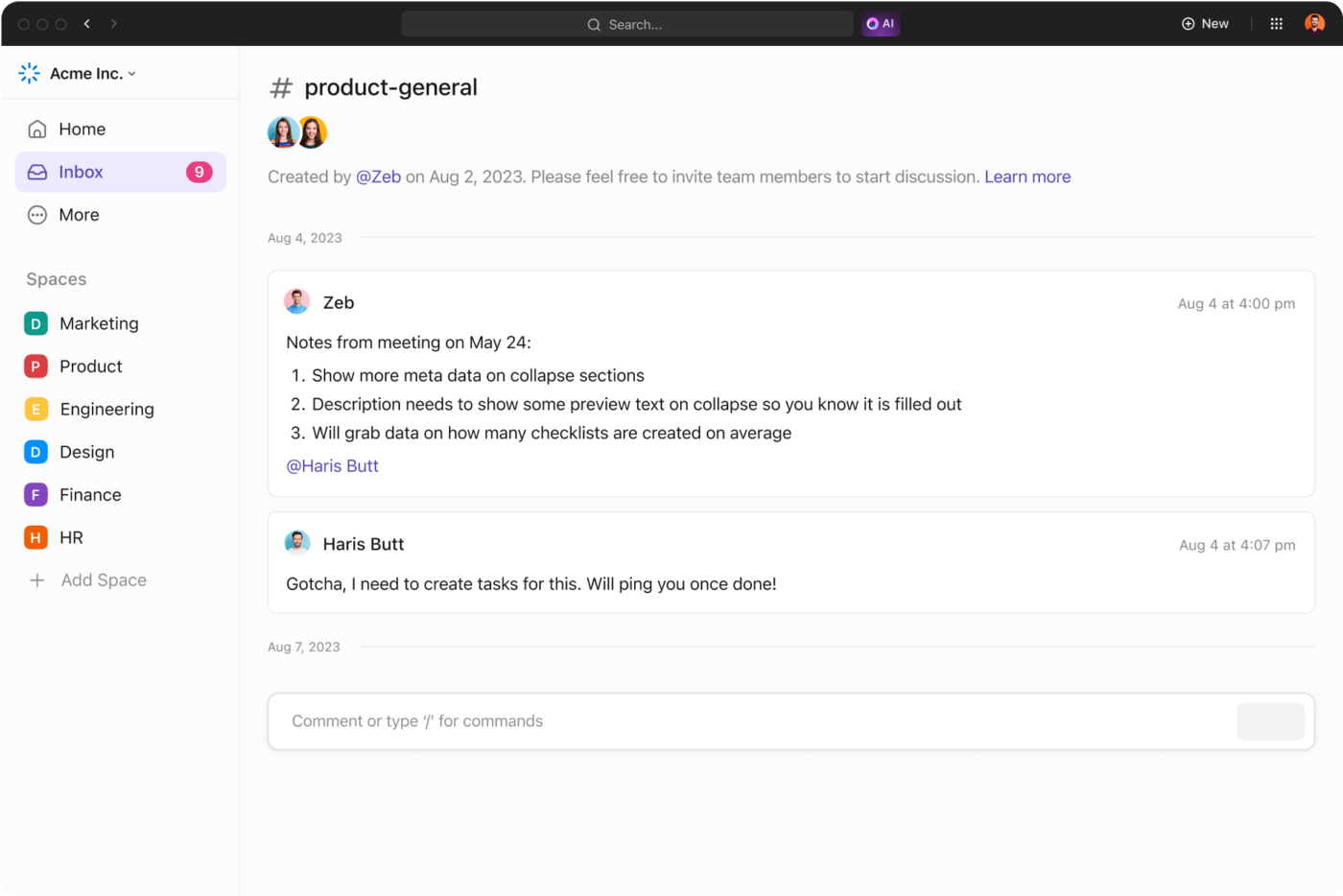
Alternative working schedules also include a break from the typical five-day workweek. Some businesses will have shorter three- or four-day workweeks for longer hours. Others will break up tasks over six days but with fewer daily hours.
Implementing alternative work schedules involves setting clear expectations, particularly if you’re letting employees decide how to allocate their time. It also means managers must have better oversight and use tools to track progress closely to avoid project delays.
Strategies to Make the Most of the Hours You Work
Choosing the right hours to work daily or each week isn’t as important as making the most of the time when you are working. By focusing more on working efficiently and effectively, you can make the time you work actually matter—rather than wasting hours surfing the internet or social media.
Here are some strategies to maximize productivity and get the most out of the number of hours you choose to work. From time management tips to business process improvement, you’ll find what you need to get things done better and faster.
Use a time tracker to stay on top of deadlines
Many employees—especially those with part-time jobs, flexible work arrangements, and remote workers—don’t know how many hours they work. Use a tool like ClickUp’s project time tracker to see how many hours you spend completing each task. ⏰
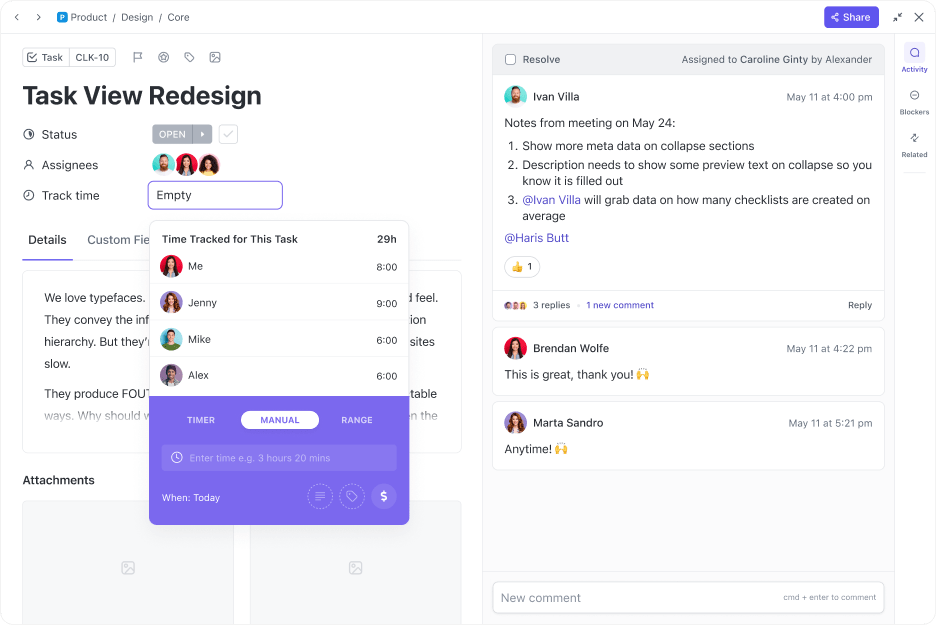
As a contractor or freelancer, this makes it easy to bill hours and send invoices. As an employee at a full-time or part-time job with a salary, time tracking makes you more effective. You can see tasks that take up most of your time and find ways to automate processes to make them faster and more efficient.
Best of all, you can track time from any device, and anywhere you’re working. Add notes to provide context if a task takes longer than expected. Create labels to categorize time spent on a project, and leverage sorting filters to see bottlenecks and areas for hourly improvement.
Create a task schedule with calendar views to visualize workflows
Maximizing your work hours involves knowing what you’re working on and when. For employees assigned across projects, making a calendar can provide a visual tool for staying on schedule and not missing important deadlines. This time management technique keeps you organized and ensures you’re on track to success. 🗓️
Be productive by staying on track with deadlines, managing schedules, and organizing work capacity with the ClickUp Calendar view. Add color-coding to categorize work by certain projects, and use priority flags to highlight work that’s most important or at-risk.

Create custom fields to add context to each task. Add dependencies to identify tasks that are waiting for your attention. Then, once you’re done with something, use the drag-and-drop feature to move it to the next stage in your pipeline—and celebrate a job well done!
Break work down into manageable tasks
We’ve all been there. You sit down at your desk with a huge project and don’t know where to start. Feeling overwhelmed, you work on something else or hop on social media to avoid the work altogether. 👨🏽💻
Instead, use a tool like ClickUp Tasks to break down work into manageable, less intimidating projects. Add multiple assignees to the task if you’re working with another coworker, or use comment threads to simplify hand-offs for the next steps.

Customizable subtasks let you break down work further so you can focus and feel accomplished by getting things done. Switch between views like to-do lists, boards, and Gantt charts, depending on what motivates you more.
Assign priorities and dependencies to project tasks
Another easy way to get distracted at work is to do things irrelevant to company goals. Stay organized and make the most of your day by creating priority lists of tasks and highlighting work that needs your attention the most. ⚠️
ClickUp Task Priorities take the guesswork out of maximizing productivity. With four color-coded flags to choose from, mark urgent work with a red flag and work your way down your task list, assigning each item a priority level. That way, when you log on or step into the office, you know what order to work through tasks.
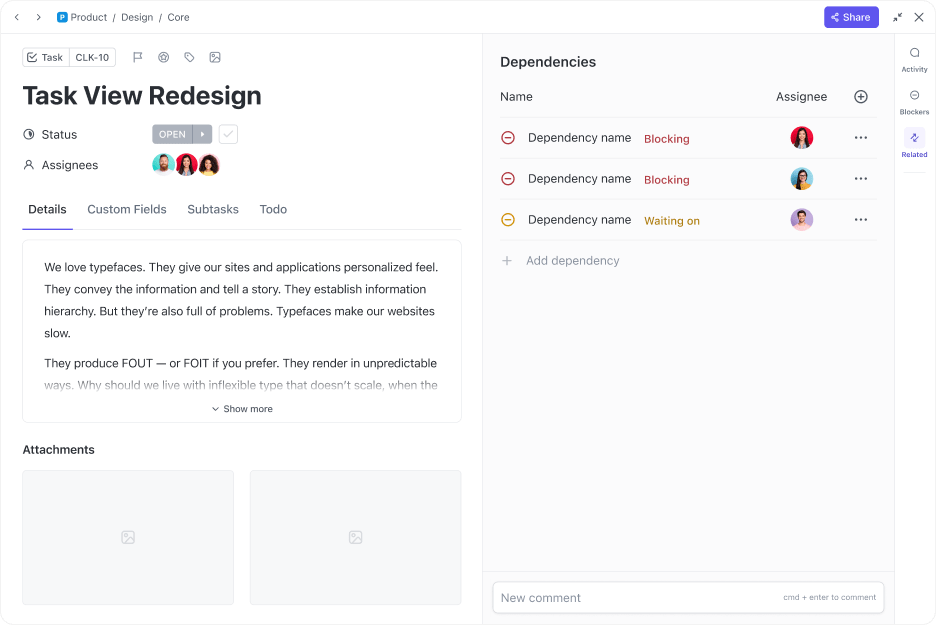
ClickUp Dependencies give you even more insight into work and the relationship between individual tasks you’re working on. You’ll quickly see what tasks are blocking other work so you can handle that first and prevent creating roadblocks down the pipeline.
Say no to new work if you’re at capacity
Maximizing productivity isn’t just about using project management tools. It also means knowing how to say no and let managers know when you’re at capacity. If you constantly say yes to any request, you’ll have less time to spend on meaningful work that needs your attention. ⛔️
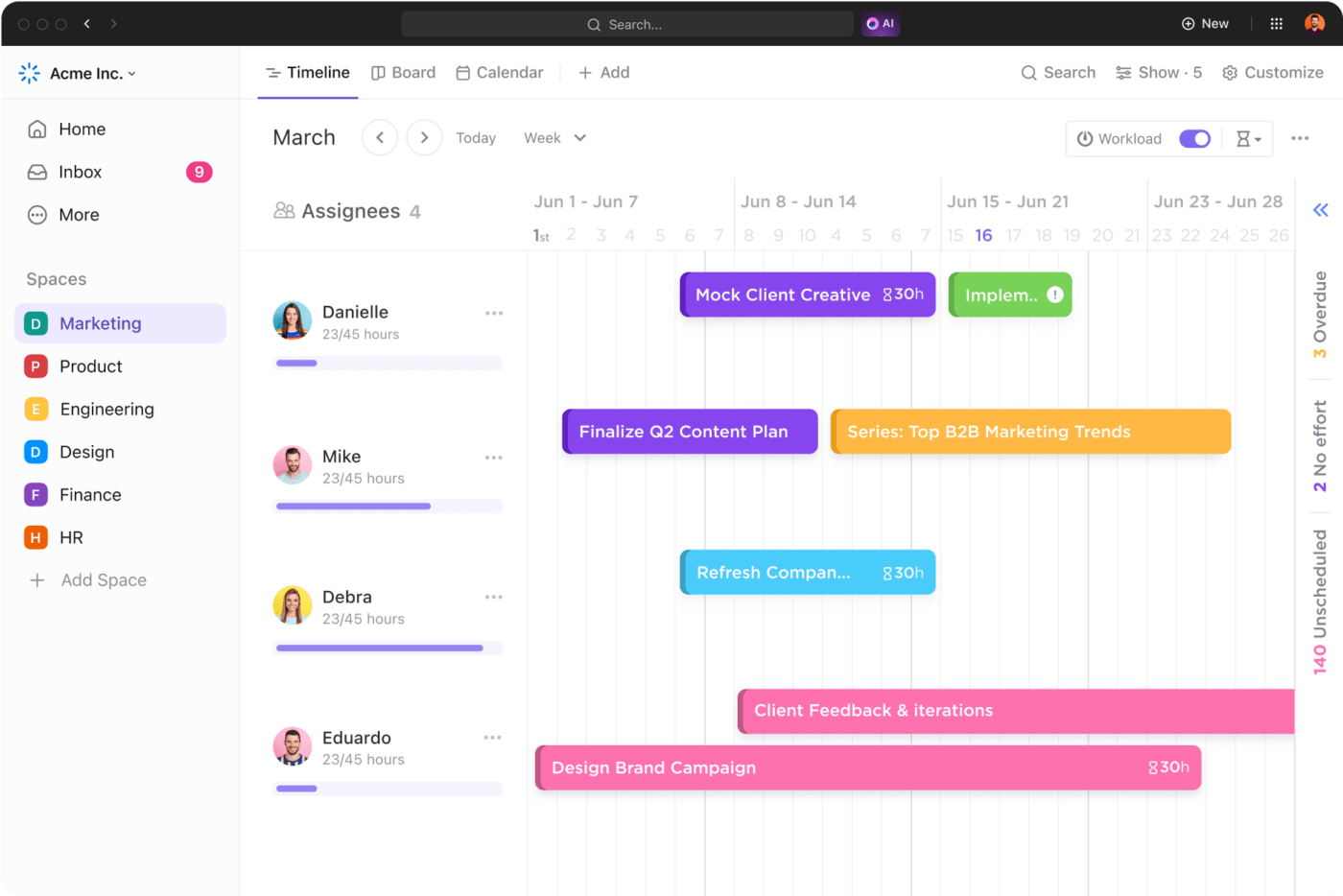
If someone asks you to do busy or menial tasks, say no if you don’t have time. Suggest automating that specific process or using an assistant or another employee who has more capacity for the work.
Limit multitasking to avoid distractions
Research shows that multitasking actually results in slower progress since you waste time switching between tasks. Plus, there’s a greater risk of making mistakes or not completing the task fully since you’re distracted. Known as context switching—the process of swapping back and forth between unrelated tasks—this practice can harm productivity and lead to project issues. 🛠️
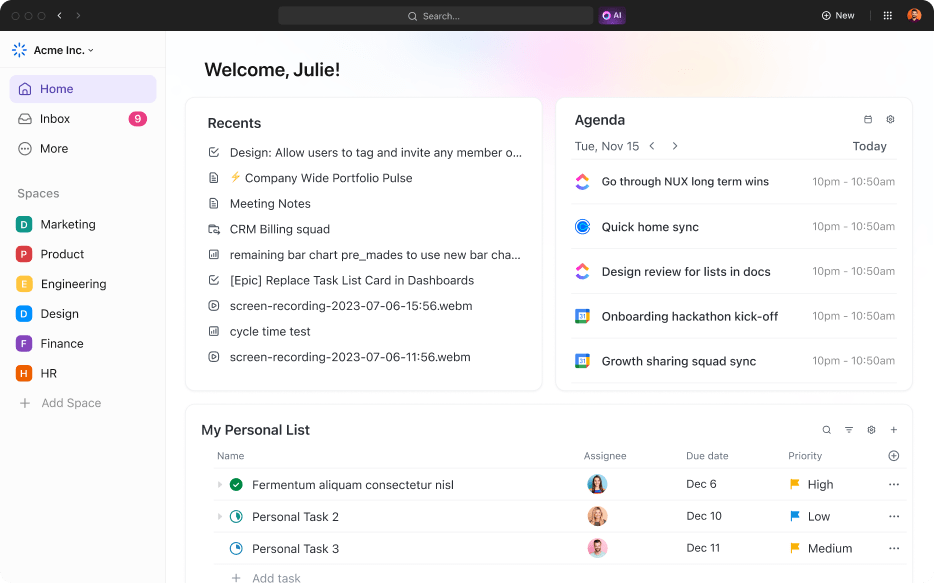
Instead of multitasking, focus on one specific task at a time. Create a daily schedule with a few of the main tasks you want to get done. Then, segment the work and do one thing at a time. Avoid the temptation to switch between tasks as you work.
Block time for deep work
One of the best time management skills is setting aside time for deep work. That way, you have a set number of hours to focus on the most important tasks without distractions.

Use time-blocking tools to set aside chunks of time for specific work. Maybe it’s a couple of hours in the morning to handle management tasks, or perhaps several hours in the afternoon to dive into product development, marketing campaigns, or sales reporting. Whatever the work, batch similar processes into a time slot and focus on working for the set period only on those tasks.
Improve Productivity When You Work With ClickUp
As a business owner or employee, deciding how many hours you should work is the first step in time and project management. Next, you’ll want to focus on maximizing the time you spend doing the work.
At the end of the day, it doesn’t matter how many hours you work. What matters most is doing good work and maximizing how you spend your time on tasks.
Sign up for ClickUp today to start working more efficiently. With task management tools, you’ll control what you’re working on, how you prioritize your schedule, and stay on track to success with calendars and to-do lists. Plus, built-in automations save time so that you can work smarter, not harder. 🙌



